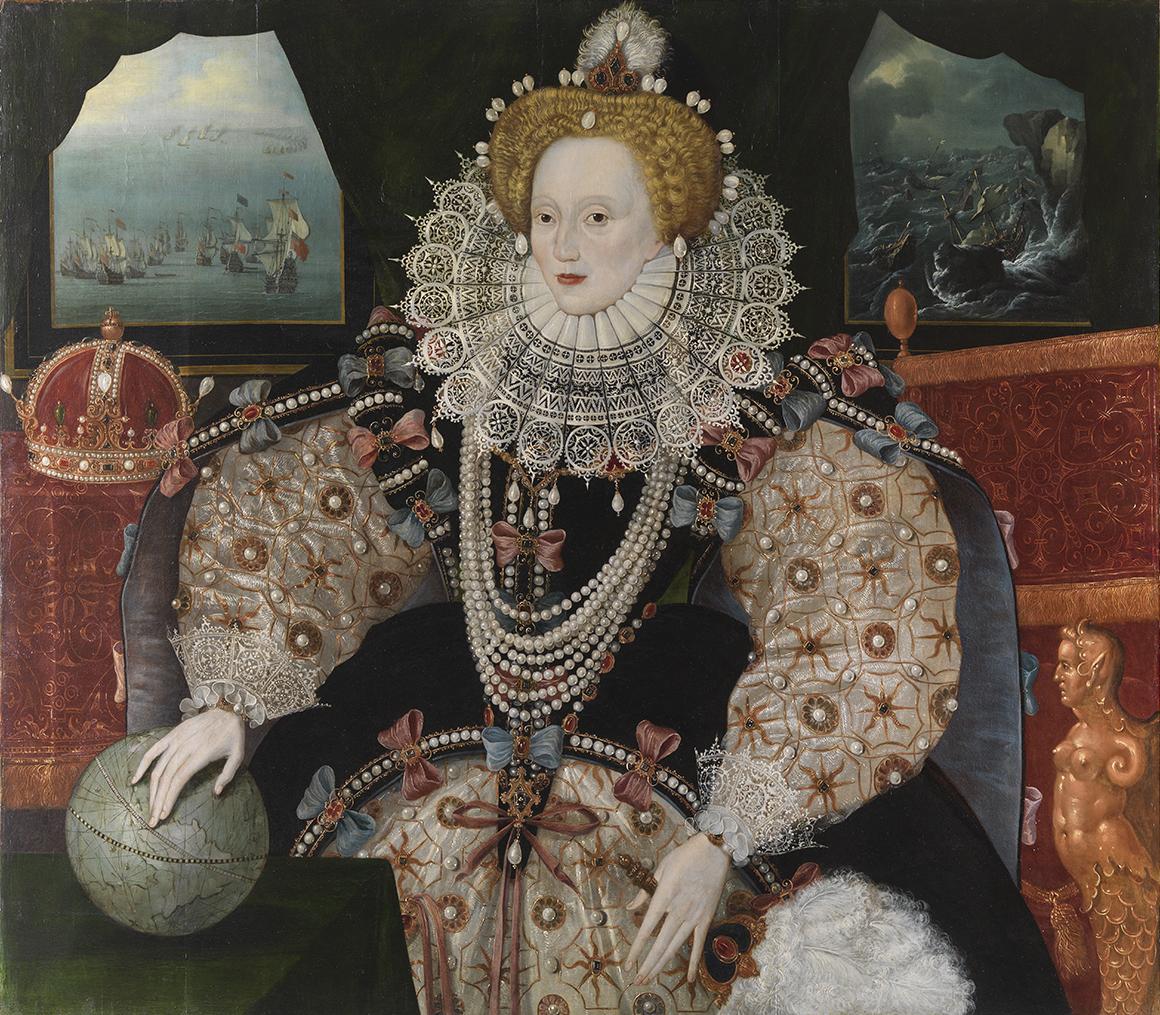When did Elizabeth I become Queen?
The date chosen for Queen Elizabeth’s coronation was 15 January 1559, and the festivities kicked off with a procession through London the day before.
The procession and the pageants
The day-long spectacle saw Queen Elizabeth I taken through crowd-lined streets carried on a golden litter. The procession was punctuated with five pageants staged in honour of the new queen.
The first pageant laid out the Queen’s genealogy, stressing her 'Englishness', in contrast to the 'Spanishness' of Mary. It also presented the Queen’s descent from Henry VII and Elizabeth of York, whose marriage had put an end to years of civil war. The performance implied that Elizabeth, as the granddaughter of those who ended the War of Roses, would reunify England and bring peace.
The second pageant showed the Queen’s government characterised by the four virtues of True Religion, Love of Subjects, Wisdom and Justice trampling their opposite vices, including Superstition and Ignorance. In the third pageant the Lord Mayor presented Elizabeth with a gift of gold, symbolically demonstrating the interdependence of the City and the Crown.
The fourth pageant, contrasted a decaying commonwealth (symbolic of Mary) with a thriving one (symbolic of Elizabeth). It featured the figure of Truth, who was carrying a Bible written in English and entitled the Word of Truth. Truth presented the Bible to the Queen, who kissed it and laid it on her breast to the cheers of the crowd. The task ahead of her was presented in the final pageant, with Elizabeth portrayed as Deborah, the Old Testament prophet, who rescued the House of Israel and then went on to rule for 40 years.
A resounding success
Elizabeth excelled in the starring role in such spectacles, managing gracefully to combine the dignity and grandeur of her position with a common touch that allowed the public to warm to her.
For her part, Queen Elizabeth I committed herself wholly to the Lord Mayor and the people of London during the day's activities, pledging:
‘And whereas your request is that I should continue your good lady and be Queen, be ye ensured that I will be as good unto you as ever Queen was unto her people. No will in me can lack, neither do I trust shall there lack any power. And persuade yourselves that for the safety and quietness of you all I will not spare if need be to spend my blood. God thank you all.’
The coronation
The actual coronation took place in Westminster Abbey on Sunday 15 January 1559. The ritual itself was a clever compromise between the Catholic practices that existed and the Protestant ones that the Queen intended to introduce.
Elizabeth was crowned in Latin by a Catholic bishop, but parts of the service that followed were read twice, in Latin and English. The changes in the service were a portent of the religious settlement to come and symbolic of her 'make-haste-slowly' approach to introducing change.
The Queen emerged from the ceremony to greet her adoring people wearing a big smile, her crown and carrying the orb and sceptre of her new office.
Using our collections for research
The collections at Royal Museums Greenwich offer a world-class resource for researching maritime history, astronomy and time.
Find out how you can use our collections for research
The Armada Portrait
Recently saved for the nation, the Armada Portrait commemorates the most famous conflict of Elizabeth I's reign – the failed invasion of England by the Spanish Armada in summer 1588. This iconic portrait is now back on public display in the Queen's House after careful conservation.
